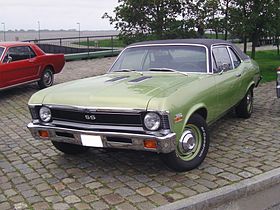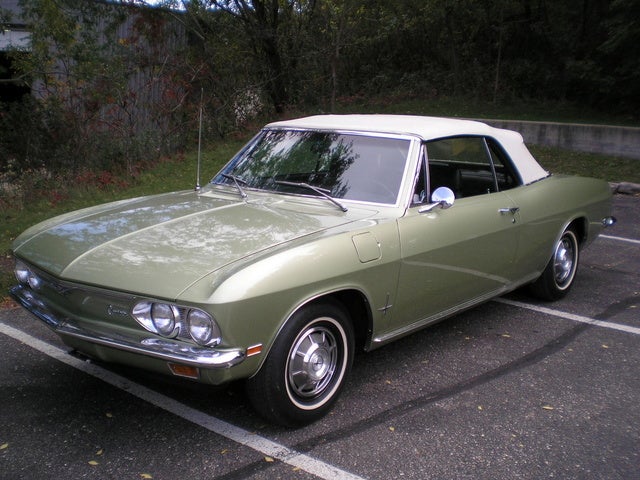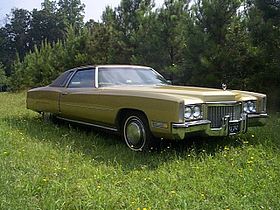1968
kernals12
Banned
I've been a big car enthusiast pretty much since I was born, so I wanted to do a car-centric alternate timeline. Since endless pages have been shed over GM's implosion, I thought I'd prevent that, by stopping all the stupid mistakes that cost them their market share.
1968:
January 10 was a cold day in Detroit. GM Chairman Jim Roche was sitting in yet another board meeting. For 3 years now, he had been the top brass at the world's largest company, employing more people, earning more revenue, and paying more taxes than any other private entity. Some said he was more powerful than any man in America not named Lyndon Johnson. His tenure was a somewhat rocky one. In 1966 he was forced to issue a public apology for attempts to smear activist Ralph Nader, Ford's Mustang was flying out of the showroom and it took GM 3 full years to properly respond with the Camaro/Firebird twins, Washington was breathing down his neck on safety, smog, and antitrust concerns, and the sales of imports kept growing, the unstoppable Beetle being joined by Datsuns and Toyotas from Japan. On the other hand, the company was still going strong and was in no danger of losing its top position, having manufactured its 100 millionth car in 1967. Roche also committed himself to Equal Employment Opportunity initiatives.
This meeting would concern GM's new planned subcompact, smaller than even the Nova, to go on sale in 1970. Executive Vice President Ed Cole had put forward a proposal for a radical design including a die cast aluminum engine block.
Roche stated his opposition to this design strongly:
"I look at this design and I worry this will be the Corvair disaster all over again. Even before Nader came along we learned the problems of a radical new small car design, Falcon outsold us 2-1 and was able to use standard parts. I think a much better proposition would be slapping a Chevy badge on one of our overseas subcompacts such as the upcoming Opel Ascona. The Opel has already sold well through Buick dealers so it's proven to be successful. By sharing resources with the West German division, we can reduce our costs and because it'll offer a sedan model, it'll have a wider appeal. We should not be taking unecessary risks"
So it was decided, GM's new subcompact was to be an Americanized version of the Opel Ascona. The Chevrolet Vega, as it would be called, would use softer suspension and be built in the US but would share much with its West German cousin.
Ed Cole was bitter about this but ultimately did not interfere with the project after becoming Chairman that year.

Chevrolet's Nova was redesigned with a larger body.




GM's Intermediates, Chevrolet Chevelle, Pontiac Tempest, Buick Skylark, and Oldsmobile Cutlass were all new for 1968.

The famous Corvette entered its 3rd Generation with aggressive coke bottle styling.

Opel got its own miniature version of the Corvette in the form of the GT.
1968:
January 10 was a cold day in Detroit. GM Chairman Jim Roche was sitting in yet another board meeting. For 3 years now, he had been the top brass at the world's largest company, employing more people, earning more revenue, and paying more taxes than any other private entity. Some said he was more powerful than any man in America not named Lyndon Johnson. His tenure was a somewhat rocky one. In 1966 he was forced to issue a public apology for attempts to smear activist Ralph Nader, Ford's Mustang was flying out of the showroom and it took GM 3 full years to properly respond with the Camaro/Firebird twins, Washington was breathing down his neck on safety, smog, and antitrust concerns, and the sales of imports kept growing, the unstoppable Beetle being joined by Datsuns and Toyotas from Japan. On the other hand, the company was still going strong and was in no danger of losing its top position, having manufactured its 100 millionth car in 1967. Roche also committed himself to Equal Employment Opportunity initiatives.
This meeting would concern GM's new planned subcompact, smaller than even the Nova, to go on sale in 1970. Executive Vice President Ed Cole had put forward a proposal for a radical design including a die cast aluminum engine block.
Roche stated his opposition to this design strongly:
"I look at this design and I worry this will be the Corvair disaster all over again. Even before Nader came along we learned the problems of a radical new small car design, Falcon outsold us 2-1 and was able to use standard parts. I think a much better proposition would be slapping a Chevy badge on one of our overseas subcompacts such as the upcoming Opel Ascona. The Opel has already sold well through Buick dealers so it's proven to be successful. By sharing resources with the West German division, we can reduce our costs and because it'll offer a sedan model, it'll have a wider appeal. We should not be taking unecessary risks"
So it was decided, GM's new subcompact was to be an Americanized version of the Opel Ascona. The Chevrolet Vega, as it would be called, would use softer suspension and be built in the US but would share much with its West German cousin.
Ed Cole was bitter about this but ultimately did not interfere with the project after becoming Chairman that year.

Chevrolet's Nova was redesigned with a larger body.



GM's Intermediates, Chevrolet Chevelle, Pontiac Tempest, Buick Skylark, and Oldsmobile Cutlass were all new for 1968.
The famous Corvette entered its 3rd Generation with aggressive coke bottle styling.

Opel got its own miniature version of the Corvette in the form of the GT.
Last edited:













